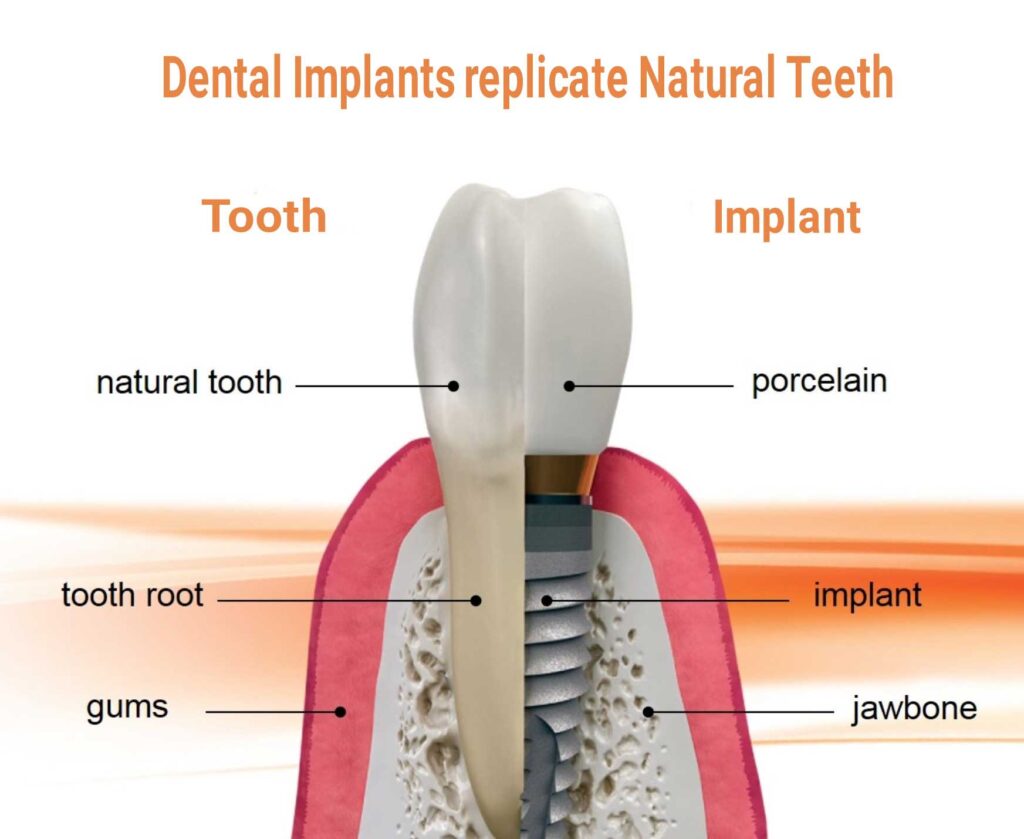What are dental implants?
Dental implants are made of medical-grade substances that the body can easily adapt to. These substances may include highly durable metals such as Titanium or composite ceramic materials such as Zirconia, which has gained considerable attention in the holistic dentistry department for its strength and its natural tooth-like color.
It can be used to replace missing teeth, either in the lower or the upper jaw. They can also be utilized to provide strength and durability to a weaker section of the gum or a frail tooth. In case of artificial teeth replacements, the implants are strongly attached to the jaw bone, creating an excellent foundation for the artificial tooth.
Implants can also be used to install fixed partial or complete dentures, laying a sturdy foundation to these dental structures. These tools are widely used in the field of holistic and cosmetic dentistry to improve the functionality as well as the appearance of teeth and jaw.





Sequence with SIC Implant and Wax-Up Technology
Video Credits: BioHorizons
Three-Step Guidance to Installing Implants
Base Insertion
The first step in implant surgery includes inserting the base, which includes the metal or ceramic implant into the gum, embedding the implant deeply inside the jaw bone. Base insertion takes a few months as the implant strongly blends with the jaw surface.
Post Attaching
After the base has been tightly secured and fixated to the jaw bone, the post is attached over the implant. The jaw surface heals around the post. This further strengthens the structure, making sure that the implant is inserted securely.
Crown Setting
Once the post has been attached, a natural tooth-like crown whose size is an exact match of the exact teeth of the patient. Artificial crowns blend in perfectly with natural ones.

SIC Vantage® Features
Video Credits: BioHorizons
Advantages of Dental Implants

Other important advantages are as follows:
Improved Functionality
Implants highly improve the functionality of the teeth, providing a solid base to any weakened teeth and holding them in place with ease.
High Durability
Dental implants are highly durable. Once inserted, these implants can last for a lifetime, even if the patient is subjected to an accident that hurts the jaw bone.
Convenience in eating
Chewing and eating food becomes a lot easier with implants. These dental structures have a strong root. Food can be easily ground into tiny particles, which improves digestion.
Better Oral Health
Implants help in improving oral hygiene. Food particles do not get stuck between the gaps, which reduces the chances of cavities and microbial infection of gums.
Better Appearance
Dental implants improve the appearance of the jaws. Since these structures easily fuse with the jawbone, these implants have a permanent set. There will be no loose tooth or oddly shaped tooth when it comes to implants. This promotes an improved appearance.
Types of Dental Implants
Single Dental Implant
If a single tooth has to be replaced, it can be done using a single dental implant. This procedure applies to patients who might suffer from the problem of a single missing tooth.
In this procedure, a metallic or ceramic implant is fixed to the jaw bone. This procedure is comparatively a lot less invasive and the recovery time for a single dental implant is comparatively less.
Multiple Dental Implants using Bridges
If multiple teeth which are located adjacent to each other are missing, often bridges are recommended as the implant procedure.
In this procedure, two places on either end of the gap where the teeth are missing get implants attached to the jawbones. The teeth in between this gap do not have any implants attached, rather they act like a “bridge”.
These teeth in the middle only have a crown attached to the jaw. The implanted tooth along with the bridges blend in perfectly, giving off a natural appearance.
Replacing All Teeth Using Implanted Dentures
Dentures are artificial sets of teeth attached to an artificial jaw-like structure. Dentures can be easily implanted over your natural jaw using a set of single implants at various regions of the denture.
Implanted dentures are better than normal ones because these are fixed to the jaw, making chewing and eating very comfortable.
SIC White Features
Video Credits: BioHorizons
Why Choose Us?
At Top Ryde Dentists, we have a team of expert dental surgeons and trained nurses to make your dentistry experience a really pleasant experience. We aim to provide top-notch dental services with world-class equipment and thorough post-operative care.
